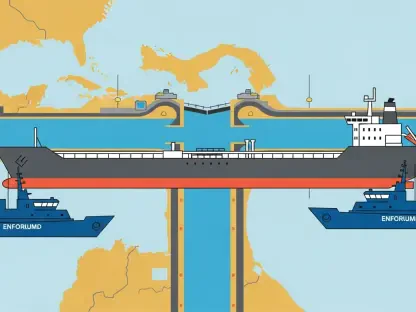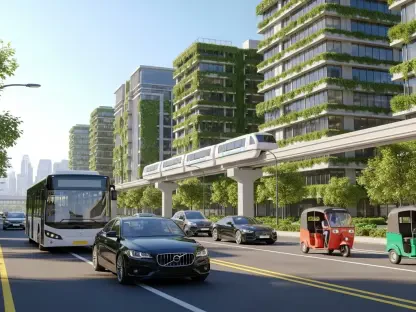What happens when a vehicle becomes more than just a mode of transport, transforming into a powerhouse for homes and entire communities during blackouts? Picture a severe storm knocking out electricity across a city, yet thousands of electric vehicles (EVs) step in, feeding stored energy back to the grid or powering households directly. This isn’t science fiction—it’s the promise of bi-directional charging, a technology already embedded in many next-generation EVs. However, without clear regulations, this game-changing potential risks becoming a grid safety hazard, leaving utilities, automakers, and customers in a regulatory gray area.
The significance of this issue cannot be overstated. As EVs evolve into dynamic energy resources, their ability to both consume and supply power offers a unique opportunity to stabilize the grid, integrate renewables, and save costs for owners. Yet, the absence of precise rules around bi-directional capabilities creates confusion and unnecessary barriers. With models like the Ford F-150 Lightning already on the roads in significant numbers, establishing a clear framework is critical to ensure safety while unlocking the benefits of this innovation for all stakeholders.
The Dual Role of EVs: Beyond Transportation
Electric vehicles are no longer just cars; they are emerging as mobile energy storage units with the potential to revolutionize how power is managed. Bi-directional charging allows these vehicles to draw electricity from the grid and discharge it back when needed, supporting homes during outages or easing strain during peak demand hours. Studies suggest that widespread adoption of this technology could reduce grid stress by up to 15% during high-load periods, a substantial boost for energy resilience.
This capability also aligns with the push for renewable energy. By storing excess solar or wind power and releasing it when production dips, bi-directional EVs can help balance supply and demand, making green energy more reliable. For consumers, the financial upside is clear—some early adopters have reported savings of over $500 annually by leveraging their vehicle’s battery as a backup power source.
However, the path to realizing these benefits is fraught with obstacles. Without standardized regulations, utilities struggle to integrate these vehicles safely, and customers face unexpected delays and costs. The urgency to address these gaps grows as more bi-directional-capable EVs hit the market, demanding a solution that balances innovation with grid stability.
The Regulatory Roadblock: Capable vs. Enabled
At the core of the challenge lies a critical distinction between EVs that are “bi-directionally capable” and those that are “bi-directionally enabled.” Many modern EVs come equipped with the hardware for two-way power flow, meaning they have the potential to discharge energy. Yet, activating this feature often requires software updates or additional equipment, and many owners may never choose to use it, treating their vehicle solely as a means of transport.
This ambiguity triggers significant regulatory overreach in numerous regions. Simply having the hardware can subject an EV to a full interconnection process—a rigorous, costly evaluation designed to ensure grid safety for active distributed energy resources. For an owner with no intention of enabling bi-directional features, this results in frustrating delays and fees, often discouraging broader EV adoption. A recent survey found that 30% of potential buyers hesitated due to fears of bureaucratic hurdles.
The ripple effect extends to utilities as well, burdening them with administrative tasks for vehicles that pose no active risk. Clarifying the difference between potential and active use could streamline processes, ensuring oversight focuses only on EVs actually discharging power when connected to the grid. This precision in policy would pave the way for smoother integration and wider acceptance of the technology.
Industry Perspectives: Calls for Clarity
Insights from industry leaders highlight the pressing need for regulatory reform. Bill Crider, head of global charging and energy services at Ford Motor Co., has stressed, “The market for bi-directional EVs is expanding rapidly, and without precise guidelines, both grid safety and customer trust are at risk. Rules must match the reality of how these vehicles are used.” His perspective reflects a broader industry consensus that vague policies hinder progress.
Early adopters have shared similar frustrations, with many facing unexpected interconnection requirements despite not activating bi-directional features. In one case, a California EV owner waited over three months for approval, only to discover the process was irrelevant to their usage. Such experiences underscore how misaligned regulations can alienate consumers and slow the technology’s rollout.
Research backs these concerns, indicating that streamlined rules for inactive but capable EVs could cut utility administrative costs by approximately 20%. Redirecting those resources toward actual safety concerns would benefit the entire energy ecosystem. These voices collectively point to a clear demand for policies that differentiate intent and action in bi-directional EV use.
Grid Safety at Stake: Why Rules Matter
The implications of unregulated bi-directional charging extend far beyond inconvenience—they pose tangible risks to grid stability. When EVs discharge power without proper oversight, they can create voltage fluctuations or overload local circuits, potentially leading to outages or equipment damage. A 2023 study by a leading energy institute warned that unmonitored bi-directional systems could increase grid failure risks by 10% in densely populated areas.
Utilities face the daunting task of managing thousands of potential energy sources without adequate guidelines. In regions with high EV penetration, the lack of clarity has already led to isolated incidents of power disruptions tied to improper integration. These examples serve as a stark reminder that safety must remain the priority, even as innovation accelerates.
Balancing these concerns requires a framework that anticipates worst-case scenarios while enabling progress. Robust regulations can prevent mishaps by ensuring only activated systems undergo thorough safety checks, protecting the grid from unintended consequences. This approach would safeguard communities while allowing the technology to flourish under controlled conditions.
Forging a Solution: Steps for Progress
Addressing these challenges demands actionable strategies from utilities and regulators to create a cohesive system for bi-directional EVs. First, adopting distinct terminology is essential—defining “bi-directionally capable” as hardware-equipped but inactive, and “bi-directionally enabled” as actively discharging power when grid-connected. This differentiation ensures that only relevant vehicles face stringent reviews, reducing unnecessary burdens.
Second, a tiered interconnection process should be implemented. For inactive but capable EVs, a simple notification or registration could suffice, while comprehensive evaluations, including system impact studies, remain reserved for enabled vehicles. Such a structure would encourage EV adoption by minimizing red tape for non-active users, while still prioritizing safety for those contributing to the grid.
Finally, collaboration between regulators, utilities, and automakers must be strengthened to align on safety protocols and activation mechanisms. Joint efforts to educate consumers about when interconnection applies and the advantages of bi-directional features can build trust and promote responsible use. Together, these steps can create a balanced ecosystem where innovation and safety coexist, benefiting all parties involved.
Reflecting on the Journey Ahead
Looking back, the dialogue around bi-directional EVs revealed a transformative opportunity tempered by significant hurdles. The potential to bolster grid resilience and support renewable energy integration stood out as a compelling vision, yet the regulatory maze threatened to derail progress. Each stakeholder—utilities, automakers, and consumers—played a vital role in navigating this complex landscape.
The path forward became clearer through proposed solutions like differentiated terminology and tiered processes. These measures aimed to eliminate confusion and ensure safety without stifling innovation. Collaboration emerged as the cornerstone, with partnerships poised to turn challenges into stepping stones for a more sustainable energy future.
As momentum built, the focus shifted to implementation—urging regulators to act swiftly in refining policies and educating the public. The lessons learned underscored that proactive steps taken now would shape how effectively EVs could support the grid in the years ahead, ensuring a legacy of resilience and efficiency for generations to come.









